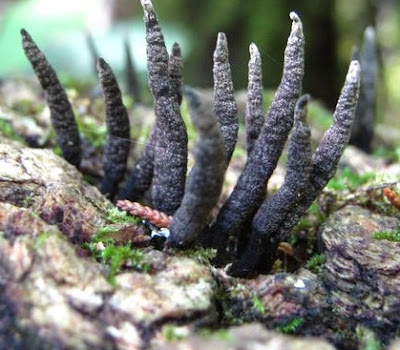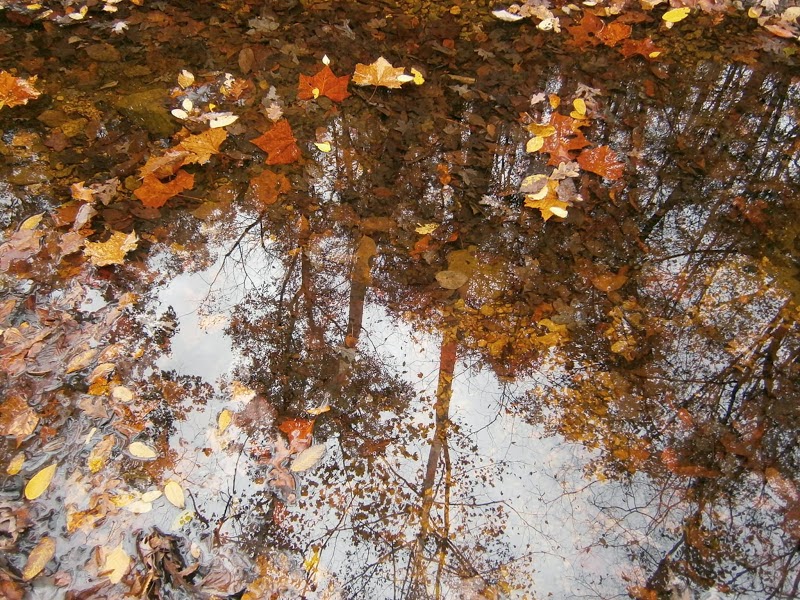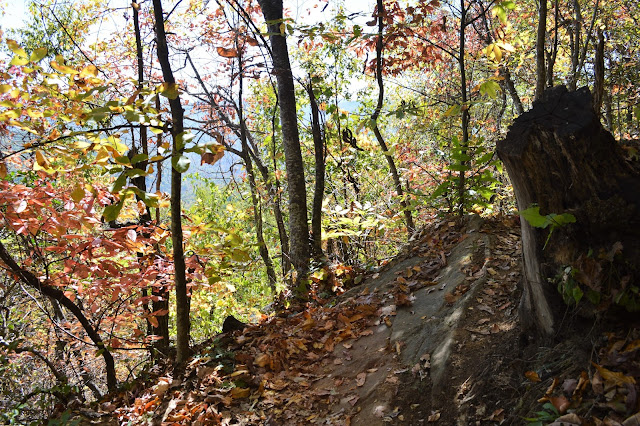 |
| Visitors' Center |
I celebrated the last day of Autumn (Oct. 31st)
at one of my favorite walking trails.
Ancient cultures saw this day as the last of the harvest days
and brought their cattle down from the hills to prepare for
the cold and dark season ahead. By their tradition
November 1st marked the first day of Winter,
so a feast was in order on the last night of October,
and that evolved into Halloween.
Why do I call Oct 31st the last day of Fall?
For information about the Ancient Solar Calendar go to the site below.
Click here for info about The Wheel of the Year
Also, you can look at my post about The Solar Calendar by clicking here..
The hiking trails at Beaman Park are some of my favorites
to walk because of the beauty and solitude of Henry Creek,
at one of my favorite walking trails.
Ancient cultures saw this day as the last of the harvest days
and brought their cattle down from the hills to prepare for
the cold and dark season ahead. By their tradition
November 1st marked the first day of Winter,
so a feast was in order on the last night of October,
and that evolved into Halloween.
Why do I call Oct 31st the last day of Fall?
For information about the Ancient Solar Calendar go to the site below.
Click here for info about The Wheel of the Year
Also, you can look at my post about The Solar Calendar by clicking here..
The hiking trails at Beaman Park are some of my favorites
to walk because of the beauty and solitude of Henry Creek,
especially at this time of the year.
I like to begin at the Visitors' Center and walk down
to the creek on the Sedge Hill Trail (yellow on the map), which is
located right behind the visitors' center.
 |
| The Sedge Hill Trail, right behind the Visitors' Center |
 |
| Jack O'Lantern Mushrooms, perfect for Halloween. They're bioluminenscent...glow in the dark!! Bioluminescence! Time Lapse ! Coincidence... That they grow at Halloween? Jack O'Lanterns Some life forms that you'll see here are named after witches! |
 |
| A fungus called Witch's Butter! |
When touched,
It trembles like jelly;
Witch's Butter.
The trail is an easy descent ending up at the bridge at
Henry Creek (see below). After you cross the bridge turn
right and walk slowly along the creek's edge.
Soon there will be a side trail that leads to the creek.
 |
| In the background you can see the bridge crossing Henry Creek. |
 |
| A Millipede that smells like cherries when you pick it up. |
Make sure to walk slowly and stop often to
observe the plants and fungi and any animals that
you may run across, such as the millipede (above photo).
 |
| The rocky bluffs along Henry Creek. Take time here to just look and listen. |
 |
| Chanterelle mushroom! |
Some fungi grow out of fallen trees and look like the fingers of
a dead person, if you use your imagination.
a dead person, if you use your imagination.
 |
| Dead Man's Fingers |
I like to go right up to the creek or actually get into the creek
and look for animals swimming around.
 |
| There are many animals living in the creek, such as minnows, crawdads, snails, and salamanders. |
At this time of the year you can see a great
variety of fungi growing on fallen trees, decomposing them.
 |
| Great color! |
 |
| A perfect day for a walk in the woods. |
Most of the green leaves have fallen off the trees,
but there are some evergreen plants on the forest floor,
such as this beautiful Maidenhair Fern.
but there are some evergreen plants on the forest floor,
such as this beautiful Maidenhair Fern.
 |
| If you're lucky, you'll run across a gorgeous Gulf Fritillary butterfly, which is dressed for the occasion! |
 |
| There a many small streams that flow into Henry Creek. Take the time to walk up the streams to see what you can see. |
About 99.9% of the fungi growing around here are harmless,
but you must be aware of one species...Amanita virosa!
 |
| The beautiful Destroying Angel (Amanita virosa)! |
Continue on the Creekside Trail until you reach the trailhead
next to the parking lot. You can, then, either turn left
and complete the Henry Hollow loop (white on the map) or
do what I did, today, and just turn around and walk slowly
back to the bridge enjoying every step.
Lichens grow on fallen trees and break them down with time.
do what I did, today, and just turn around and walk slowly
back to the bridge enjoying every step.
Lichens grow on fallen trees and break them down with time.
 |
| Different species of Lichens, decomposing this fallen tree. |
 |
| A fungus called Devil's Urn. |
Go across the bridge and ascend to the top of the hill
where you parked. Don't forget to take your time
and continue to observe everything.
This is a great place to observe birds!
and continue to observe everything.
This is a great place to observe birds!
 |
| The bridge crossing Henry Creek. |
This was a great Halloween (last day of Fall) walk.
Next time I come here I will take the entire loop and
may even walk the Ridgetop Trail (red on the map).
If you're in the area take the time to see one of my
favorite walking trails at Beaman Park.
It's beautiful at any time of the year.






















































